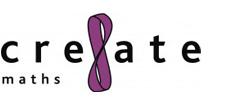Forces: Moments and Hooke's law
These classic experiments, demonstrations and practical activities explore forces and moments for students aged 11-14.
Whilst this list provides a source of information and ideas for experimental work, it is important to note that recommendations can date very quickly. Do NOT follow suggestions which conflict with current advice from CLEAPSS, SSERC or recent safety guides. eLibrary users are responsible for ensuring that any activity, including practical work, which they carry out is consistent with current regulations related to Health and Safety and that they carry an appropriate risk assessment. Further information is provided in our Health and Safety guidance.
- ALL
- Teacher guidance
- Video
- Activity sheet
- External link
Teacher guidance
Investigating Turning Forces: Moments
In this activity students discover for themselves the importance of the perpendicular distance in moments. It is presented as a whole class discussion but can easily be adapted for small group work. The focus of the activity will help students to understand that a force can produce a turning effect and identify the perpendicular distance and explain its significance.
Moments: Revision
Not practical work, but a nice card sort activity where students can check what they know at the end of the topic.
Video
Demonstrating Physics: Forces
The first demonstration on this film makes an excellent introduction to moments and can be used to really explore pupil’s ideas about forces – a bit of assessment for learning there! Invite students to describe the forces on the box, maybe even giving them cardboard arrows that they can place where they think forces are acting.
To extend the demonstration into a longer discussion about forces, prepare the box before the students come into the room. As in the film it should be well over the edge of the table. Fix a piece of string from the box to the ceiling so that it looks as if it is holding up the box. Lead a discussion about the forces acting on the box before inviting one student to sit under the box whilst you cut the string.
Now lead another discussion about the forces on the box before opening it to let out the helium balloon. After a further discussion about the forces, remove the balloon before inviting students to suggest what must be in the box. This is a really good demonstration for teachers to use to develop your own questioning skills.
Activity sheet
Stretchiness
This mathematics activity draws on measuring stretchiness which involves the collection of real data, calculating percentages and experimental design. This resource models one way in which engineers use their knowledge of mathematics to investigate the properties of materials. Here students investigate the stretchiness of jelly sweets, they are provided with a prompt card which suggests that they consider the condition of the material, length of time that the stretch should be applied and the type of sweet being used.
External link
Balancing a beam
This is the classic experiment on moments and it is still well worth students carrying it out as they will get a real feeling for how moments work. The instructions here from the Institute of Physics are clear but some classes will struggle preparing the beam so that it is balanced. Even students who are clear about what they are doing may find it difficult to attach the paper clips accurately and so teachers may want to use pre-prepared beams (new rulers are usually fine).
Encourage students to design their own results table and discuss how many times the measurements should be made and what units they are in.
The optional bit at the end of the instructions is good for those who work fast or need some extension.
A see-saw weighing device
Once they have got the idea of moments, students will enjoy this fun practical where they use moments to weigh objects in the room, each other or the teacher. You’ll probably want to run this as a teacher led whole class activity but it will be one where you can engage the whole class quite readily.
Obviously you need to be sensitive to body image issues and only use students who are willing volunteers.




